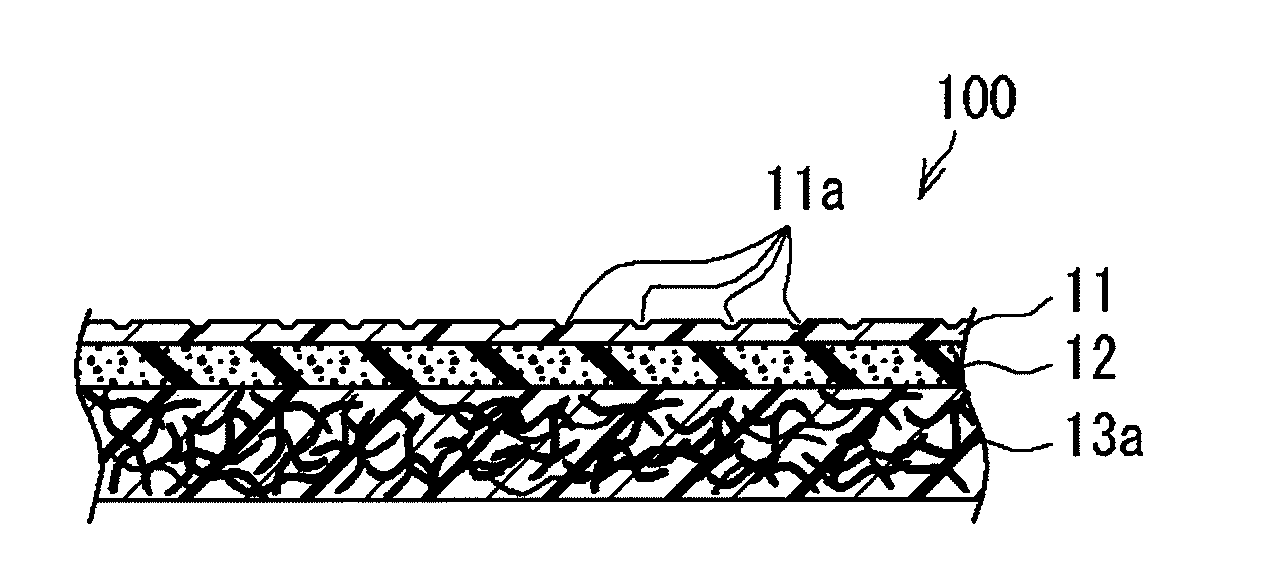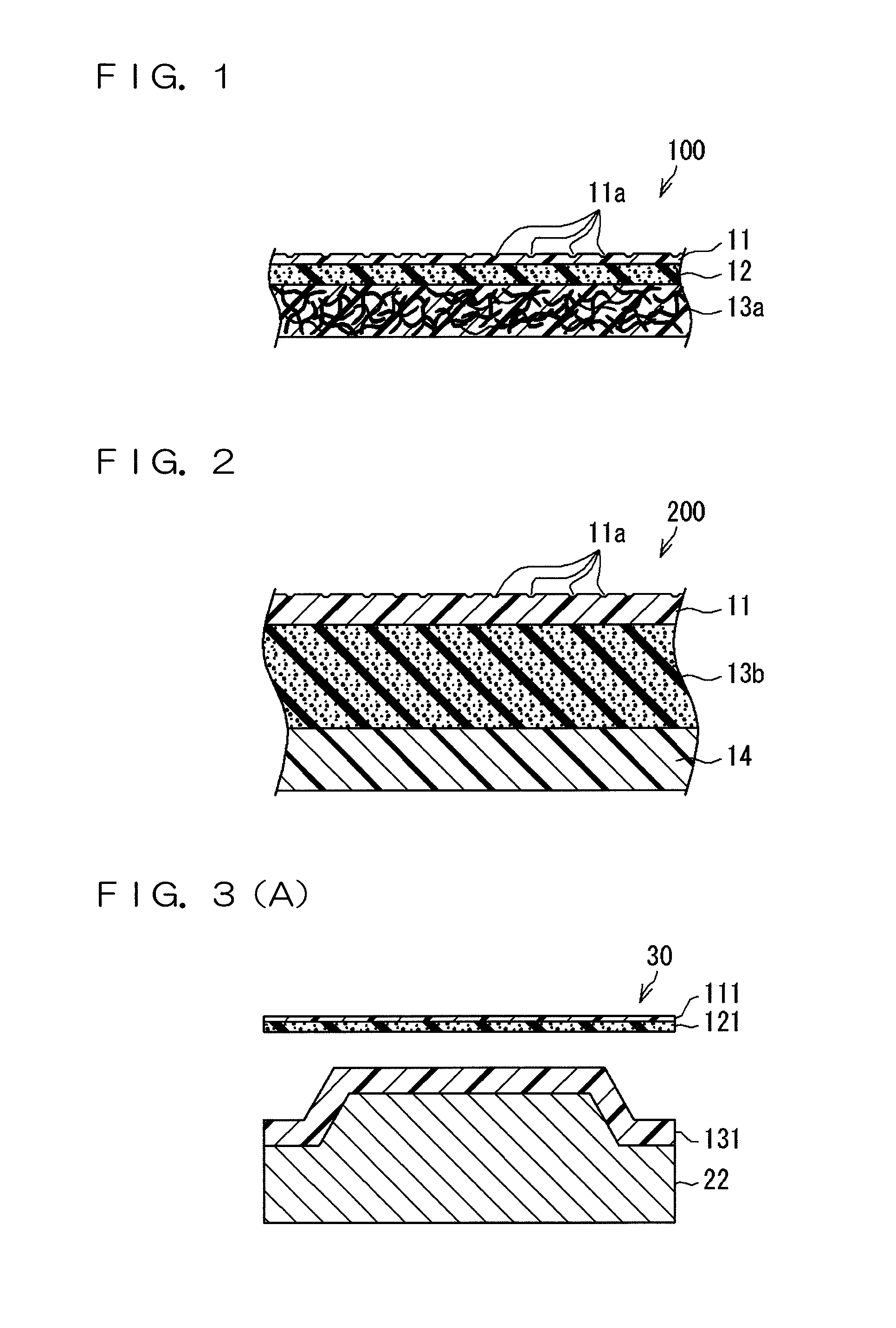Interior material for vehicle
- Summary
- Abstract
- Description
- Claims
- Application Information
AI Technical Summary
Benefits of technology
Problems solved by technology
Method used
Image
Examples
example 1
[0140]The following starting materials shown in (1)-(3) were used to produce an interior material for a vehicle and evaluation was performed.
(1) Material for Forming the Skin Layer
[0141]50% by weight of an olefin-based thermoplastic elastomer (trade name “Milastomer 7030NH” manufactured by Mitsui Chemicals, Inc.), 30% by weight of a polyolefin resin (trade name “Novatec EC9” manufactured by Japan Polypropylene Corp.) which is an ethylene propylene random copolymeric resin, 10% by weight of a polylactic acid resin (trade name “Ingeo 4032D” manufactured by Nature Works LLC), and 10% by weight of a styrene-based thermoplastic elastomer (trade name “Tuftec H1052” manufactured by Asahi Kasei Chemicals Corp.) were mixed. Then the mixture was formed using an extruder into a sheet having a thickness of 0.5 mm. Subsequently, the sheet was clamped around a roll having an embossed pattern on its circumference surface thereby transferring the embossed pattern to the sheet to form a sheet for th...
example 2
[0151]Production and evaluation of the interior material for a vehicle was conducted in the same manner as in Example 1 except that a material for forming the skin layer having an embossed pattern containing the olefin-based thermoplastic elastomer, polyolefin resin, polylactic acid resin and styrene-based thermoplastic elastomer in amounts of, respectively 50% by weight, 20% by weight, 20% by weight, and 10% by weight, was used. The evaluation results are shown in Table 1.
example 3
[0152]Production and evaluation of the interior material for a vehicle was conducted in the same manner as in Example 1 except that a material for forming the skin layer having an embossed pattern containing the olefin-based thermoplastic elastomer, polyolefin resin, polylactic acid resin and styrene-based thermoplastic elastomer in amounts of, respectively 50% by weight, 10% by weight, 30% by weight, and 10% by weight, was used. The evaluation results are shown in Table 1.
PUM
| Property | Measurement | Unit |
|---|---|---|
| Fraction | aaaaa | aaaaa |
| Fraction | aaaaa | aaaaa |
| Fraction | aaaaa | aaaaa |
Abstract
Description
Claims
Application Information
 Login to View More
Login to View More - R&D
- Intellectual Property
- Life Sciences
- Materials
- Tech Scout
- Unparalleled Data Quality
- Higher Quality Content
- 60% Fewer Hallucinations
Browse by: Latest US Patents, China's latest patents, Technical Efficacy Thesaurus, Application Domain, Technology Topic, Popular Technical Reports.
© 2025 PatSnap. All rights reserved.Legal|Privacy policy|Modern Slavery Act Transparency Statement|Sitemap|About US| Contact US: help@patsnap.com



